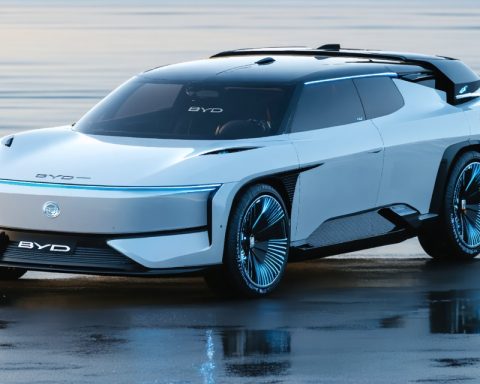- Algeria’s expansive solar farms could make it a key player in global green hydrogen production, potentially reducing hydrogen costs to $4/kg by using solar energy for electrolysis with seawater or wastewater.
- Mauritania’s Megaton Moon Project aims to develop a vast hydrogen hub near Nouakchott, using 6 GW of electrolysis and 13 GW of combined wind and solar, to generate 339,000 tons of green ammonia annually by 2029.
- In Europe, alliances such as TotalEnergies and Air Liquide in the Netherlands emphasize the need for financial support to realize hydrogen aspirations, highlighting the gap between ambition and current technology.
- These initiatives demonstrate the potential for solar-rich African countries to lead a global shift toward a sustainable hydrogen economy.
Beneath the blazing sun, the deserts of Algeria, with their sprawling solar farms, pulse with the potential to transform the energy landscape. Visionary researchers have painted a future where solar energy harnessed across Algeria can position the nation as a pivotal player in the global hydrogen arena. The secret lies in utilizing the country’s abundant solar energy, potentially driving down green hydrogen costs to as low as $4 per kilogram, and tapping into seawater or wastewater for electrolysis. This approach not only fortifies local energy security but also slashes emissions dramatically, setting a roadmap for sustainable prosperity.
Meanwhile, Mauritania’s vast horizons beckon technological ambition. Denmark’s GreenGo Energy embarks on an unprecedented journey, turning over 100,000 hectares near Nouakchott into a future-forward hydrogen hub. The Megaton Moon Project outlines a visionary phased rollout, with plans to deploy 6 GW of electrolysis and nearly 13 GW combined of wind and solar capacity. By 2029, the initial phases aim to birth 339,000 tons of green ammonia annually with precision-engineered scalability aligned with market needs.
Yet, from across the Atlantic, the chorus of innovation extends to Europe’s heart. As TotalEnergies and Air Liquide forge alliances in the Netherlands, the continent faces the necessity to recalibrate its hydrogen dreams. European stakeholders echo the need for persistent financial incentives to transform political visions into market realities. The call for robust investment in hydrogen infrastructure rings loud, underscoring the disparity between ambition and the present technological fabric.
Amidst these initiatives, the message is clear: harnessing natural resources with strategic foresight can illuminate a path towards a cleaner, hydrogen-powered future. Africa’s solar-rich nations stand poised to lead this revolution, positioning themselves at the helm of a global energy transformation.
Unveiling the Next Green Energy Revolution: How Solar-Powered Hydrogen Could Change the World
How-To Steps & Life Hacks: Harnessing Solar Energy for Green Hydrogen
How to Produce Green Hydrogen in Solar-Rich Regions:
1. Identify Optimal Solar Locations: Assess areas with the highest solar irradiance, like the deserts of Algeria and Mauritania, as prime candidates for solar farm installations.
2. Develop Efficient Solar Farms: Invest in cutting-edge photovoltaic technology to maximize energy capture, reducing costs and enhancing yield.
3. Integrate Electrolysis Technology: Utilize advanced electrolysis units powered by solar energy to split water (seawater or wastewater) into hydrogen and oxygen, ensuring efficiency and environmental sustainability.
4. Focus on Water Sources: Prioritize sustainable water management techniques to mitigate resource depletion, crucial for desert regions.
5. Build Infrastructure for Storage and Distribution: Develop support systems for hydrogen storage, such as liquefaction plants and pipelines, to ease market integration.
Real-World Use Cases: Transformative Projects
– Algeria’s Solar Potential: A prime example where massive solar deployment could significantly lower the cost of green hydrogen, making it an attractive export.
– Mauritania’s Megaton Moon Project: By 2029, expected to produce 339,000 tons of green ammonia annually, showcasing how large-scale projects can meet global energy demands.
– Netherlands Hydrogen Infrastructure: Collaboration between TotalEnergies and Air Liquide highlights the importance of aligning national infrastructure strategies with innovative technologies.
Market Forecasts & Industry Trends
– Global Green Hydrogen Market: Expected to exceed $11 trillion by 2050, according to the International Energy Agency (IEA), highlighting the significance of solar energy investments in Africa.
– Investment in Renewable Energy: Surge in interest from international stakeholders to fund hydrogen infrastructure, catalyzing further market growth.
Reviews & Comparisons
– Algeria vs. Mauritania: Algeria focuses more on solar potential, while Mauritania’s project leans heavily on combined solar and wind, diversifying its energy mix.
– Electrolysis Technologies: Alkaline vs. proton exchange membrane (PEM) electrolysis remains a focal point, each having distinct advantages in efficiency and cost.
Controversies & Limitations
– Water Usage Concerns: Significant debate around sustainable water sourcing for electrolysis in desert regions. Technological innovations must prioritize reduced water usage.
– Infrastructure Costs: High initial investment for infrastructure may delay wide-scale adoption without substantial financial incentives.
Features, Specs & Pricing
– Cost of Production: Green hydrogen production costs are projected to fall to $4/kg in optimal solar conditions, with further reductions expected as technology advances.
– Scalability: Projects like the Megaton Moon Project are designed for scalability, allowing gradual increase in production capacity to meet market demand.
Security & Sustainability
– Energy Security: Diversifying energy sources with renewable hydrogen reduces dependency on fossil fuels, enhancing national energy security.
– Emission Reductions: Green hydrogen production contributes to drastic emission cuts, critical for combating climate change.
Insights & Predictions
– Hydrogen’s Future: Widespread adoption of hydrogen technology will significantly reshape global energy landscapes, particularly in solar-rich regions of Africa and the Middle East.
– Policy Evolution: Expect evolved policy frameworks to support incentives for hydrogen infrastructure development, critical for sustainable energy transition.
Tutorials & Compatibility
– Integrating Hydrogen Systems: Educational resources on solar-hydrogen systems integration help ease transitions into industrial applications and everyday energy use.
– Compatibility with Existing Infrastructure: Retrofitting existing infrastructure to accommodate hydrogen is essential for seamless adoption.
Pros & Cons Overview
Pros:
– Renewable and clean energy with zero emissions.
– High potential for job creation in new energy sectors.
– Strengthens energy independence for many nations.
Cons:
– High initial capital investment and infrastructure costs.
– Technical challenges related to hydrogen storage and transport.
– Water resource management issues in arid regions.
Actionable Recommendations
– Start with Pilot Projects: Implement scalable pilot projects to fine-tune technology and strategy.
– Invest in R&D: Continued focus on research and development can further reduce costs and improve efficiencies.
– Policy Advocacy: Push for favorable policies to support sustainable hydrogen economies.
For more information on the future of energy, explore the sites of leading organizations like the International Renewable Energy Agency (IRENA) and the International Energy Agency (IEA).














